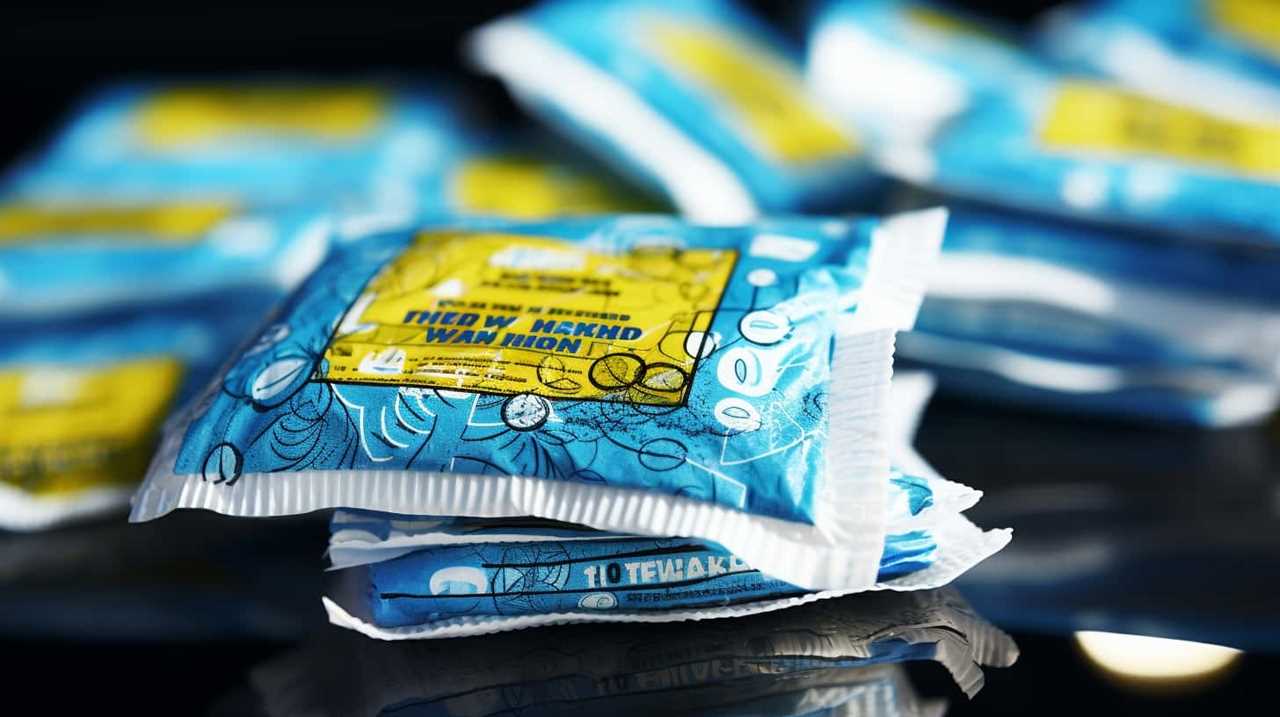Are you concerned about the impact of flushing facial tissue on your septic system? We’ve got the answers you crave.
In this article, we’ll dive deep into the composition of facial tissue, how septic systems work, and the potential risks of flushing tissue.
But don’t worry, we won’t leave you hanging. We’ll also provide alternatives and best practices for maintaining your septic system.
Get ready to master the art of septic system care!

Key Takeaways
- Facial tissue is made from biodegradable materials, but it does not break down as easily as toilet paper in septic systems.
- Flushing facial tissue can lead to clogs and blockages in the septic system, potentially causing system failure and costly repairs.
- Proper disposal of facial tissue minimizes strain on septic systems, reduces waste in landfills, and preserves the longevity of the septic system.
- Reusable cloth handkerchiefs offer a sustainable alternative to disposable facial tissues and should be considered as an option.
Understanding Facial Tissue Composition
To better understand facial tissue composition, let’s delve into the materials used in its production. The facial tissue manufacturing process involves several key steps. It begins with the selection of raw materials, typically virgin wood pulp or recycled paper fibers. These fibers are then mixed with water and chemicals to form a pulp slurry. The slurry is then refined and cleaned to remove impurities before being formed into thin sheets. These sheets are then dried and embossed to enhance their softness and absorbency. Finally, the facial tissues are cut and packaged for distribution.
The environmental impact of facial tissue production is a significant concern. The manufacturing process requires large amounts of water and energy, contributing to water and air pollution as well as greenhouse gas emissions. Additionally, the use of virgin wood pulp contributes to deforestation and habitat destruction.
To mitigate these environmental impacts, many manufacturers are adopting sustainable practices. This includes using recycled paper fibers, reducing water and energy consumption, and implementing responsible sourcing policies.
How Septic Systems Work
Now let’s explore how septic systems actually work to understand if facial tissue is safe for them. Septic systems are underground wastewater treatment structures, commonly used in rural areas without centralized sewer systems. They consist of two main components: a septic tank and a drainfield.

- Septic Tank: This is where the wastewater from your home flows into. The tank is designed to separate solids and liquids. The solids settle at the bottom, forming sludge, while the lighter materials float to the top, creating scum. Bacteria in the tank break down the organic matter.
- Drainfield: After the wastewater is treated in the septic tank, it flows into the drainfield. This is a network of perforated pipes buried in gravel-filled trenches. The wastewater is evenly distributed through the pipes and slowly percolates into the soil, where further treatment occurs.
- Septic Tank Maintenance: Regular maintenance is crucial for the proper functioning of a septic system. This includes routine inspections, pumping of the tank every few years, and avoiding the disposal of non-biodegradable materials.
Proper septic system installation and maintenance are essential to ensure the system’s longevity and effectiveness. By understanding how septic systems work, we can make informed decisions about the materials we use, such as facial tissue, to keep our septic systems functioning optimally.
Potential Risks of Flushing Facial Tissue
Moving on to the potential risks of flushing facial tissue, we should consider the impact it can have on septic systems. While facial tissue may seem harmless, it can pose significant environmental risks if not disposed of properly. Flushing facial tissue down the toilet can lead to clogs and blockages in the septic system, which can result in costly repairs and maintenance. Additionally, facial tissue does not break down as easily as toilet paper, and its fibers can accumulate in the septic tank and leach field, leading to reduced effectiveness and potential system failure. To further illustrate the potential risks, here is a table outlining the environmental impact of flushing facial tissue versus proper disposal:
| Flushing Facial Tissue | Proper Disposal | |
|---|---|---|
| Environmental Impact | Can cause clogs and blockages in the septic system | Minimizes strain on septic system |
| Cost | Can result in costly repairs and maintenance | Saves money on repairs and maintenance |
| Sustainability | Increases waste in landfills | Reduces waste in landfills |
| Long-term Effects | Can lead to reduced effectiveness and system failure | Preserves the longevity of the septic system |
It is clear that proper disposal of facial tissue is crucial to avoid potential risks and ensure the longevity and effectiveness of septic systems.
Alternatives to Flushing Facial Tissue
One alternative to flushing facial tissue is using reusable cloth handkerchiefs. These eco-friendly options offer a sustainable solution to the problem of excessive waste generated by disposable facial tissues. By using cloth handkerchiefs, you can reduce your environmental footprint and contribute to a more sustainable lifestyle.

When considering alternatives to flushing facial tissue, it’s important to consider proper disposal methods. Here are three options to ensure the proper disposal of cloth handkerchiefs:
- Wash and reuse: After using a cloth handkerchief, simply wash it with your regular laundry. This ensures that any bacteria or germs are eliminated, and the handkerchief is ready for reuse.
- Separate storage: Keep a designated container for used handkerchiefs until they can be washed. This prevents cross-contamination and ensures proper hygiene.
- Ethical disposal: If a cloth handkerchief is too worn or damaged to be reused, consider repurposing it as a cleaning cloth or donating it to textile recycling centers to minimize waste.
Best Practices for Septic System Maintenance
To ensure the proper functioning of our septic systems, we must be mindful of the maintenance practices that help us maintain a healthy and efficient system. Regular septic system inspections are an essential part of this maintenance routine. These inspections involve assessing the condition of the tank, checking for any leaks or blockages, and ensuring that the system is operating within the required parameters. It is recommended to have a professional conduct these inspections at least every three years, although the frequency may vary depending on the size and usage of the system. Additionally, septic system additives can be used to enhance the performance of the system. These additives contain beneficial bacteria that aid in breaking down waste and preventing clogs. However, it is important to note that not all additives are effective, and it is best to consult with a professional before using them. By adhering to these best practices, we can ensure the longevity and efficiency of our septic systems.
| Best Practices for Septic System Maintenance |
|---|
| Regular septic system inspections |
| Use of septic system additives |
Conclusion
In conclusion, it’s crucial to consider the impact of facial tissue on septic systems.
While facial tissue may seem harmless, its composition can pose risks to the delicate balance of septic systems.

By flushing facial tissue, we unknowingly introduce potential clogs and damage to the system.
It’s prudent to explore alternative disposal methods and adhere to best practices for septic system maintenance to ensure the longevity and efficiency of these vital systems.










